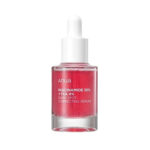The development and distribution of medical devices are subject to rigorous oversight by regulatory agencies worldwide. In the United States, the U.S. Food and Drug Administration (FDA) plays a central role in regulating medical devices to ensure their safety, effectiveness, and quality. Understanding the FDA requirements for medical devices is essential for manufacturers, distributors, and healthcare professionals to navigate the complex regulatory landscape and bring safe and innovative products to market. This article provides an overview of the FDA requirements for medical devices, highlighting key aspects and compliance considerations.
FDA Classification of Medical Devices:
The FDA classifies medical devices into three main categories based on the level of risk they pose to patients and users. These classifications determine the regulatory pathway and requirements for bringing a device to market:
- Class I: Low-risk devices such as tongue depressors and elastic bandages. These devices are subject to general controls, including registration with the FDA, listing of the device, adherence to good manufacturing practices (GMP), and labeling requirements.
- Class II: Moderate-risk devices such as infusion pumps and powered wheelchairs. These devices require special controls in addition to general controls, such as performance standards, post-market surveillance, and premarket notification (510(k)) or premarket approval (PMA) submissions.
- Class III: High-risk devices such as implantable pacemakers and artificial hearts. These devices undergo the most stringent regulatory review and require premarket approval (PMA) by the FDA to demonstrate safety and effectiveness.
Quality System Regulation (QSR):
Medical device manufacturers are required to adhere to the FDA’s Quality System Regulation (QSR), also known as 21 CFR Part 820. QSR outlines the minimum requirements for the design, manufacturing, packaging, labeling, storage, installation, and servicing of medical devices. Key elements of QSR include:
- Design Controls: Manufacturers must establish and maintain procedures to ensure that device designs meet specified requirements and are adequately validated through design verification and validation activities.
- Device Labeling: Devices must be properly labeled with essential information, including intended use, contraindications, warnings, precautions, and instructions for use. Labeling must be clear, accurate, and in compliance with FDA regulations.
- Complaint Handling: Procedures must be in place for receiving, reviewing, and evaluating complaints related to device safety and performance. Manufacturers are required to investigate complaints and take appropriate corrective and preventive actions as needed.
- Corrective and Preventive Actions (CAPA): Manufacturers must establish procedures for identifying and addressing nonconformities and implementing corrective and preventive actions to prevent recurrence.
Premarket Submissions:
Before marketing a medical device in the United States, manufacturers must submit certain premarket notifications or applications to the FDA, depending on the device classification:
- 510(k) Premarket Notification: Most Class II devices require submission of a 510(k) premarket notification to demonstrate that the device is substantially equivalent to a legally marketed predicate device and does not raise new questions of safety and effectiveness.
- Premarket Approval (PMA): Class III devices and certain Class II devices that are not substantially equivalent to a predicate device require submission of a PMA application. PMA involves a comprehensive review of scientific evidence to demonstrate the device’s safety and effectiveness.
Postmarket Surveillance:
Once a medical device is on the market, manufacturers are required to monitor its performance and report any adverse events or product defects to the FDA. Postmarket surveillance activities include:
- Medical Device Reporting (MDR): Manufacturers, importers, and device user facilities must report adverse events, product malfunctions, and serious injuries related to medical devices to the FDA.
- Postmarket Studies and Clinical Trials: The FDA may require manufacturers to conduct postmarket studies or clinical trials to further evaluate a device’s safety and effectiveness after it is on the market.
Conclusion:
Compliance with FDA requirements is critical for ensuring the safety, effectiveness, and quality of medical devices marketed in the United States. Manufacturers must understand the classification of their devices, adhere to the FDA’s Quality System Regulation, and submit appropriate premarket notifications or applications. By following these requirements and maintaining robust postmarket surveillance practices, manufacturers can bring innovative medical devices to market while safeguarding patient health and well-being.




